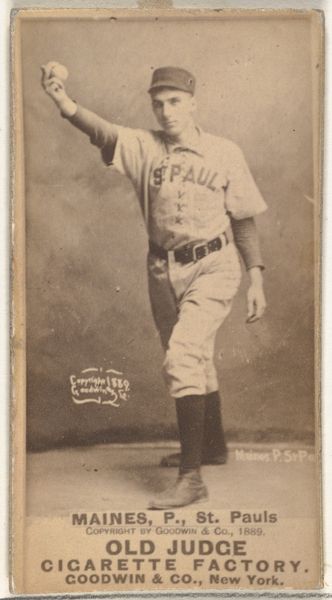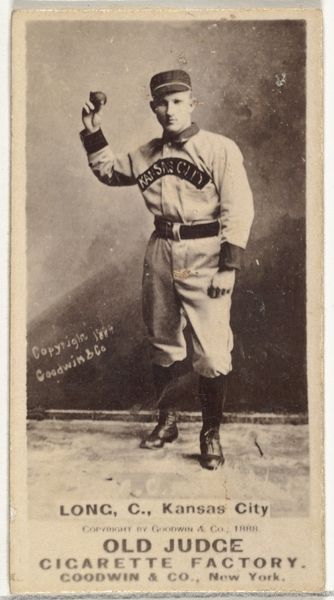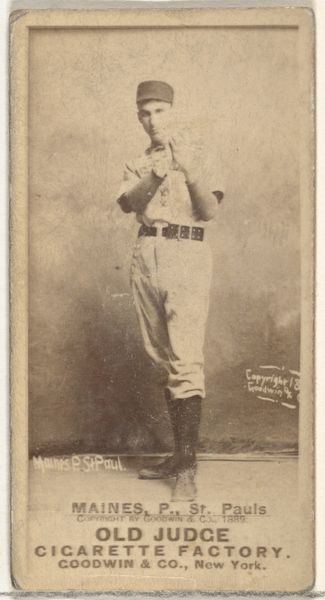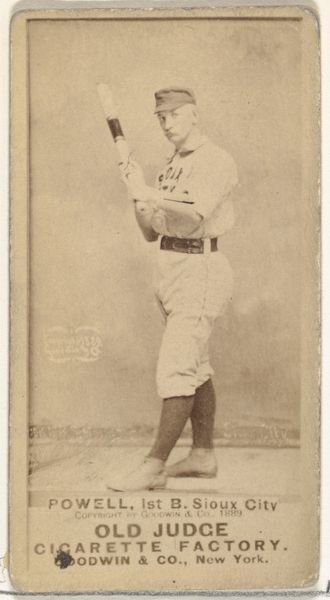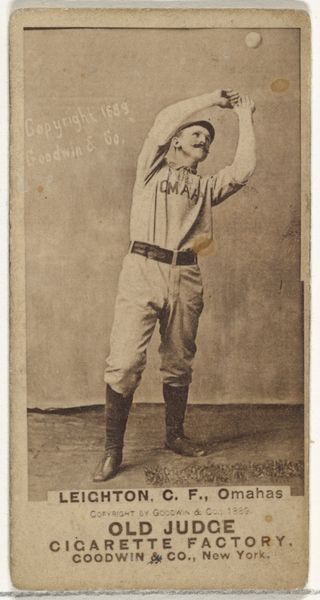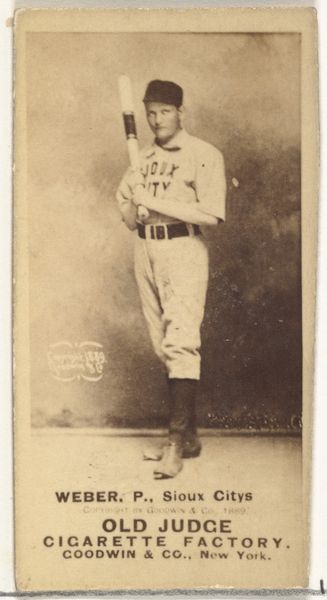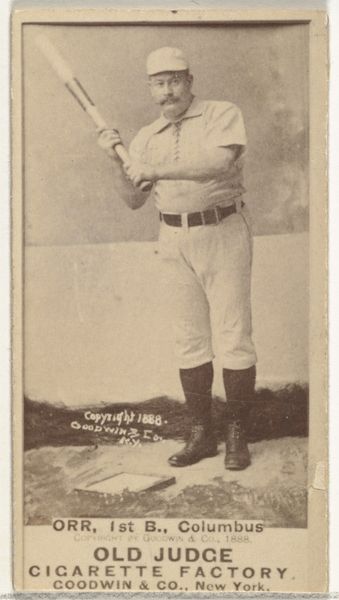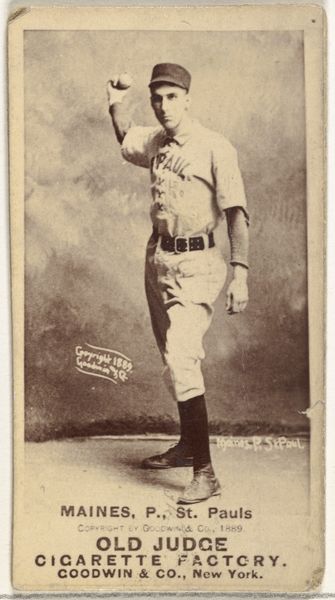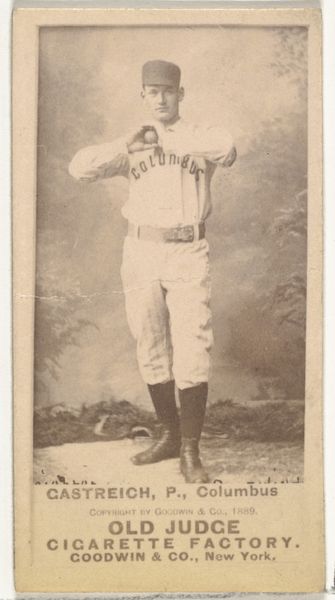
William H. Tuckerman, Pitcher, St. Paul Apostles, from the Old Judge series (N172) for Old Judge Cigarettes 1889
0:00
0:00
Dimensions: sheet: 2 11/16 x 1 3/8 in. (6.9 x 3.5 cm)
Copyright: Public Domain
Editor: This is William H. Tuckerman's baseball card from 1889, part of the "Old Judge" series for Old Judge Cigarettes. It's a photograph printed onto card stock. There's something very formal about it, even staged, for what should be a very dynamic subject – a baseball pitcher. What strikes you about this image? Curator: I see a layering of symbolic languages. We have Tuckerman, the athlete, embodying strength and prowess. But consider the cigarette advertisement – connecting athleticism, traditionally seen as virtuous, with smoking, a newly popularized, perhaps rebellious act at the time. How are these symbols intertwined to shape public perception? Editor: So the card's meaning shifts depending on whether you see it as an athletic endorsement or a promotion for cigarettes? Curator: Precisely. And more than that – think about the ritualistic nature of baseball itself. It’s a sport steeped in tradition, and framing Tuckerman within the “Old Judge” series reinforces that. "Old Judge" conjures ideas of wisdom, of establishment. Doesn't that create an interesting tension with the fresh, almost rebellious spirit of baseball's burgeoning popularity? The photograph itself, though seemingly straightforward, is actively working to solidify the image of the sport within a specific cultural framework. Editor: I never considered how the cigarette brand name factored into the image's overall message. So, beyond just showing a baseball player, this card also tries to connect the game to certain ideals, like tradition and maybe even maturity, through its branding. Thanks for helping me see that! Curator: Indeed! Recognizing the layered meanings embedded in visual culture is always enlightening. I hope this conversation about intertwined symbolism gives you a fresh lens when you observe baseball cards now.
Comments
No comments
Be the first to comment and join the conversation on the ultimate creative platform.

